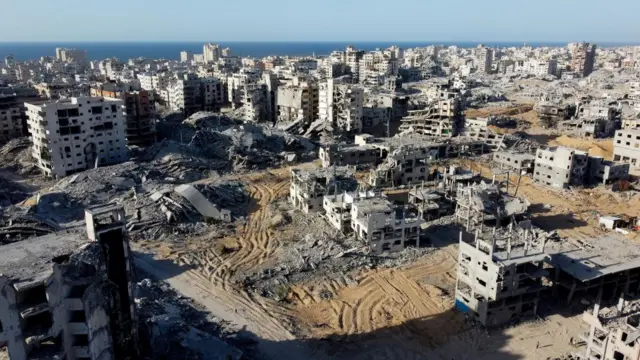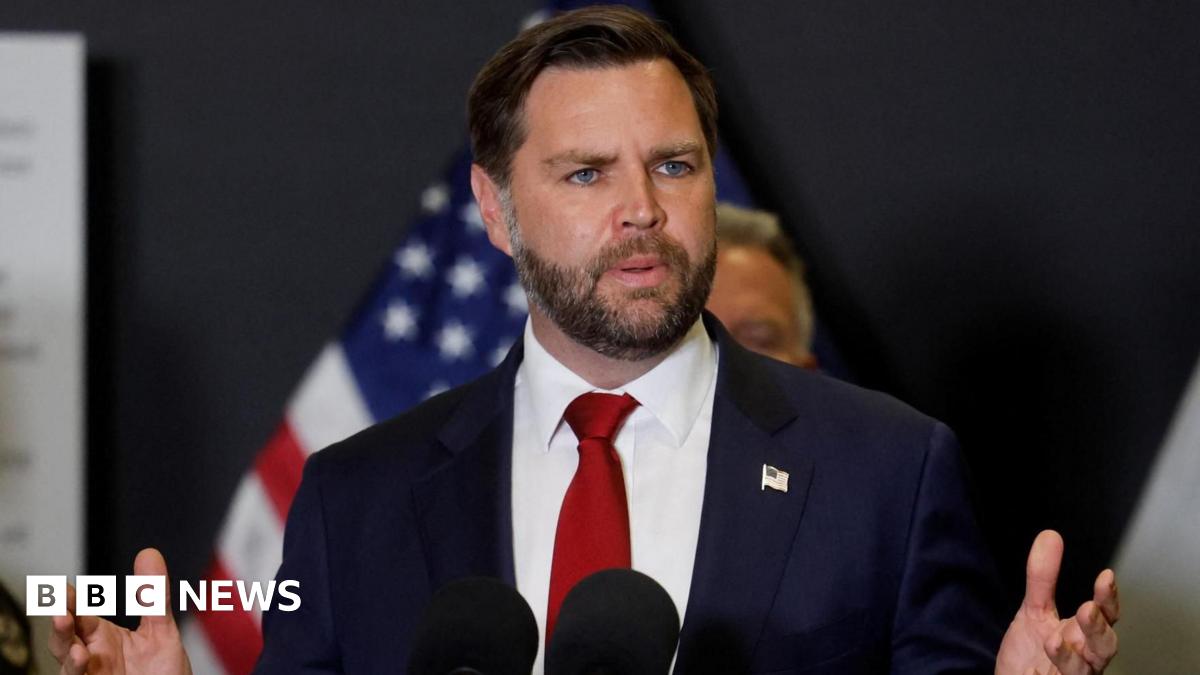
18:01 BST
 Tom Bateman
Tom Bateman
US State Department correspondent
 Image source, Reuters
Image source, Reuters
We got a clearer picture from Vance, Witkoff and Kusher just a bit ago about what they’re trying to organise on the ground in Gaza.
Remember, there is no progress yet on agreement between Israel and Hamas for the so-called “phase two” of the truce, which would deal with Gaza’s long-term governance and security, and the proposed disarmament of Hamas.
In the meantime, Israel is occupying roughly half of the territory, behind a “yellow line”, which it is currently reinforcing with concrete blocks. Hamas remains in control of most of the territory along the coastline, including in Gaza City.
Temporary measures in the region have a habit of becoming permanent, so it matters how things are unfolding right now.
If the Israelis remain in control of this outer half of Gaza, they will have no inclination to run a street-by-street military occupation. You would see the Israel Defense Forces (IDF) taking up swathes of strategic ground in highly militarised zones and secured bases behind checkpoints, as it is now.
That’s why the Americans want to get a so-called International Stabilisation Force (ISF) in place, made up mostly of troops from Arab and Muslim countries who would do on-the-ground security, could be a buffer force on the yellow line, and would install and train up a local Palestinian police. This would help shore up the conditions for reconstruction, with Kushner and Witkoff trying to get investment from their wealthy friends in the Gulf.
The US wants Hamas to disarm, but is wary that it won’t. In the minds of the Americans, the IDF/ISF zone behind the yellow line becomes a haven for both ordinary Palestinians and armed rivals of Hamas to be, as Kushner put it, in a “relatively safe” zone.
The problem with this perspective is it ignores the long history of the reality for ordinary Palestinians living under Israeli military occupation, which is far from safe for them.
There is also the record of Hamas (or its remnants now) trying to implement ruthless internal control and the risk of intra-Palestinian armed conflict. The Americans will hope the involvement of Arab forces on the ground, overseen by the US military in Israel, will shift the dynamics, but it might also contain the ingredients of even further conflict.
A best case scenario is this becomes a transitional arrangement. But it ultimately comes back to the need for an agreed long-term political solution between Israelis and Palestinians, rather than just a military and financial one.

